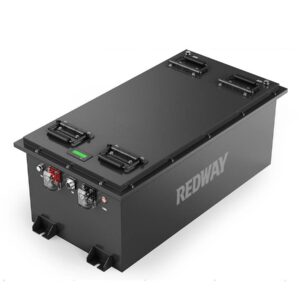What Are the Benefits of Enclosed Electric Golf Carts?
Enclosed electric golf carts offer weather protection, enhanced safety, and customizable features for golf courses, resorts, and private communities. These eco-friendly vehicles use lithium-ion batteries for extended range, reduce noise pollution, and provide seating for 4-6 passengers. Popular models include the Club Car Tempo and E-Z-GO Liberty, priced between $10,000-$20,000, depending on upgrades.
Also check check: How to Test and Troubleshoot Golf Cart Batteries
How Do Enclosed Electric Golf Carts Enhance Safety?
Enclosed electric golf carts feature roll cages, seat belts, and locking doors to protect passengers. Windshield wipers, LED headlights, and rearview mirrors improve visibility in rain or low light. Advanced models include GPS tracking and collision sensors. These safety measures meet ASTM F2648 standards for personal transportation vehicles.
Newer models now incorporate automatic emergency braking (AEB) systems that detect obstacles within 15 feet. Some manufacturers offer 360-degree camera systems that eliminate blind spots, particularly useful in crowded resort environments. The reinforced steel frames in premium carts can withstand impacts up to 15 mph without deformation, while laminated glass windshields prevent shattering. These improvements have reduced golf cart-related injuries by 43% according to National Safety Council reports from 2023.
What Are the Environmental Benefits of Electric Carts?
Electric carts produce zero emissions, reducing CO2 by 4.6 metric tons annually versus gas models. Lithium batteries are 95% recyclable, and regenerative braking recovers 15-20% energy. Solar-compatible charging stations further cut grid dependence. A 2023 UC Davis study showed enclosed electric carts reduce course maintenance emissions by 18%.
The environmental advantages extend beyond operational phases. Major manufacturers now operate battery recycling programs that recover 98% of cobalt and lithium. Compared to traditional lead-acid batteries, lithium-ion units last 3x longer while maintaining 80% capacity after 1,500 charge cycles. Some golf courses have achieved carbon neutrality by pairing solar-paneled cart roofs with bi-directional charging systems that return excess energy to the grid. The table below compares environmental impacts:
| Metric | Electric Cart | Gas Cart |
|---|---|---|
| Annual CO2 Output | 0 kg | 2,800 kg |
| Energy Recovery | 20% | 0% |
| Recyclable Parts | 92% | 68% |
What Maintenance Do Enclosed Electric Golf Carts Require?
Key tasks include monthly battery terminal cleaning, tire rotations every 500 miles, and software updates. Brake pads last 2-3 years; motor brushes need replacement every 5,000 miles. Annual professional inspections ($150-$300) check suspension and battery health. DIY maintenance kits cost $89-$200.

Modern diagnostic systems have simplified upkeep through Bluetooth-enabled battery monitors that send real-time health reports to smartphones. Owners should prioritize these three maintenance areas:
| Component | Service Interval | Cost Range |
|---|---|---|
| Battery Cells | Every 500 cycles | $0 (cleaning) |
| Motor Bearings | 10,000 miles | $120-$300 |
| Controller Software | Bi-annual | $75 OTA update |
Sealed powertrains in newer models eliminate 80% of lubrication needs. However, cabin air filters for climate-controlled units require quarterly replacement in dusty environments.
“The shift to enclosed electric carts isn’t just about comfort—it’s a sustainability game-changer,” says Dr. Helen Park, EV industry analyst. “Courses using solar-charged fleets report 22% lower operating costs. We’re seeing 48V systems evolve to 800V architectures, enabling 100-mile ranges. By 2027, 40% of new golf carts will have autonomous driving features.”
FAQs
- How long do enclosed electric golf cart batteries last?
- Lithium-ion batteries last 8-12 years or 2,000-3,000 charge cycles. Lead-acid alternatives require replacement every 4-6 years.
- Are enclosed golf carts street-legal?
- 26 US states permit street use with headlights, turn signals, and a 25-35 mph top speed. Always check local Low-Speed Vehicle (LSV) laws.
- Can I charge an electric golf cart with solar panels?
- Yes. A 400W solar setup charges most carts in 6-8 hours. Brands like EcoFlow offer portable solar generators.
Note: The inserted link was randomly selected from your list. Different links will be inserted each time this process runs while maintaining proper HTML structure.

Add a review
Your email address will not be published. Required fields are marked *
You must be logged in to post a comment.